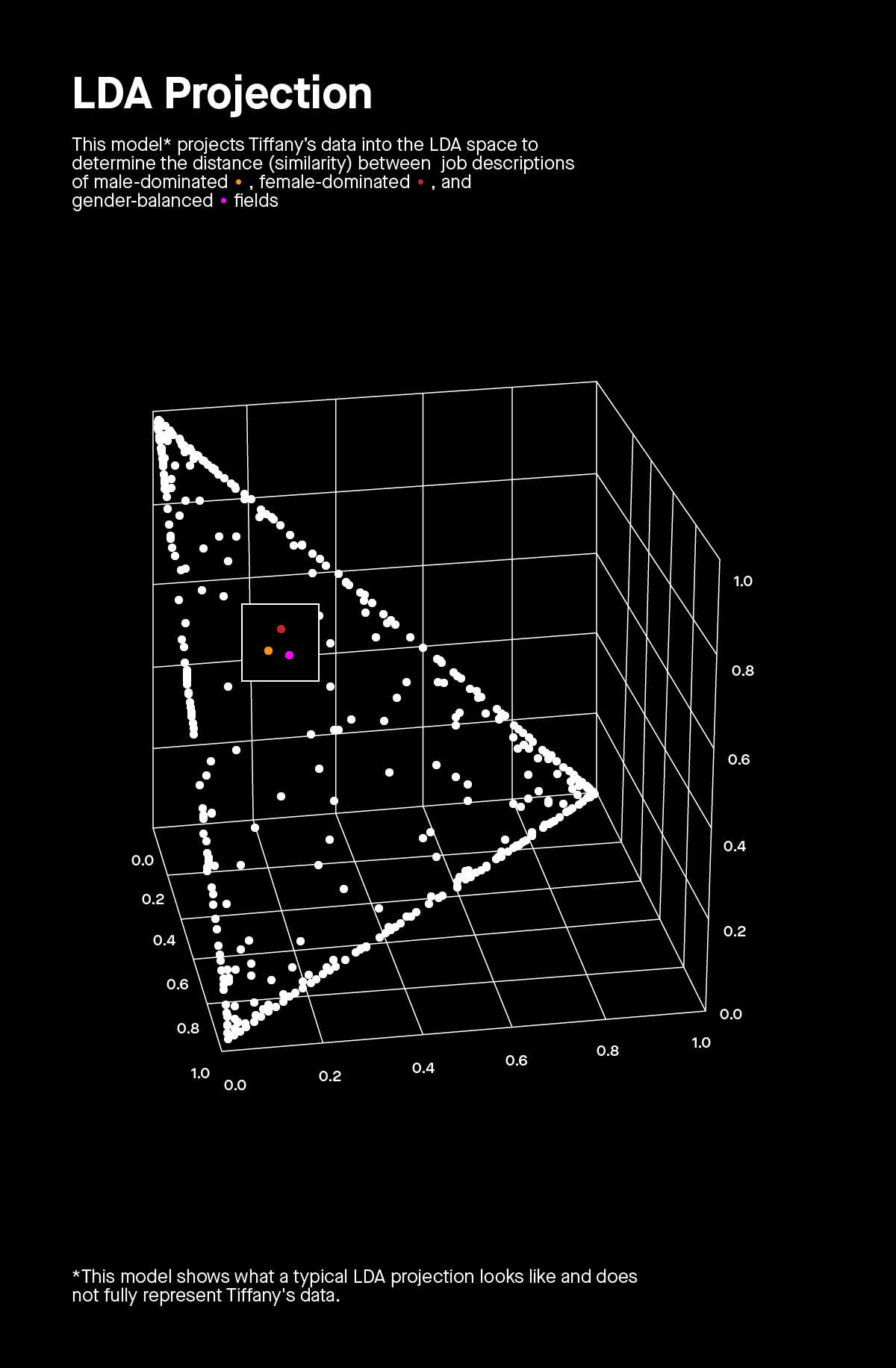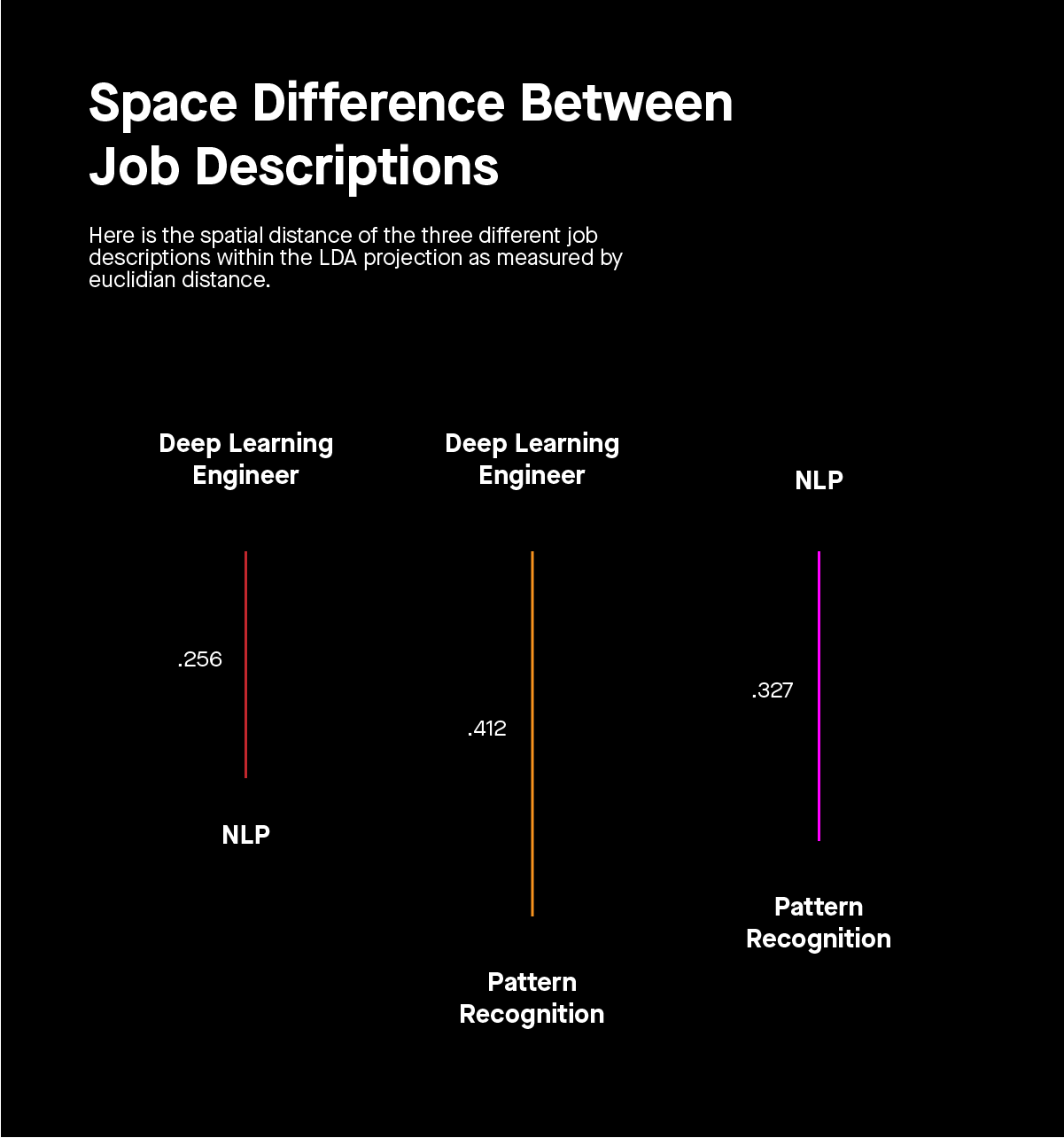It’s no secret that tech — like many fields — has a gender problem. While women make up 56 percent of the total workforce, only 25 percent of tech employees are women. Many believe that career accelerators like Thinkful — which lower the barriers to a tech education — can help bridge the divide. The truth, however, is we still have a long way to go.
Earlier this year, the World Economic Forum released its annual report on The Global Gender Gap. While its overall message was bleak like in years past, it revealed some surprising data on the field of artificial intelligence (AI): namely, there are some disciplines in which women actually outnumber men.
Tiff French, a NYC-based student in Thinkful’s Data Science Flex program, was stunned when she came across these results. She had chosen to specialize in Natural Language Processing — one of the fields in which women outnumber men. Was this just a coincidence or was there some larger force at work? This question ultimately formed the basis for her final capstone project titled “Gender Bias in Tech Job Descriptions.”
Hidden Messages in Job Descriptions
In 2011, a report in the Journal of Personality and Social Psychology concluded that “gendered wording in job advertisements exists and sustains gender inequality.” While the report did not specifically focus on jobs in tech, it provided enough of a basis for Tiff to ask ‘Could this be happening in the field of AI?”
To answer this question, Tiff first created a data set of nearly 4,300 AI job postings by scraping career sites like Indeed. She used a scraper tool that her mentor Phillip recommended called Beautiful Soup, and the overall process took nearly 48 hours.
Next, she analyzed the job descriptions using a variety of unsupervised learning models. One of those models called LDA (short for Latent Dirichlet Allocation) was used to first identify and then map the most salient terms in each of the job descriptions. By mapping the terms, Tiff could see how relatively similar the job descriptions were to one another. This would allow her to test her original hypothesis that the descriptions of the female-dominated specializations were quite different than those of the male dominated specializations — even if that wasn’t apparent to the naked eye.

Results...With A Twist
TIff’s analysis shows that there are differences in the language used between female-dominated and male-dominated fields. However, this comes with an interesting caveat: job descriptions for female-dominated fields were most similar to balanced fields, while male-dominated fields were most dissimilar from balanced fields. This would suggest that to achieve gender balance, the male-dominated fields would have the longest way to go in making changes.
The chart below, which was derived using an LDA projection, demonstrates this phenomenon. Natural language processing (a female-dominated field) is more similar to pattern recognition (male-dominated field) than to deep learning (a balanced field.)

Where do we go from here?
While the results of her analysis differed from her original hypothesis, Tiffany is excited rather than discouraged. “The beauty of the [data science] field,” Tiffany explains, “is that you keep learning and it’s not static.” One hypothesis she would like to explore is whether job descriptions for gender-balanced fields are consciously written to avoid gendered language.
Companies that want to hire more women shouldn’t wait until Tiff completes her next analysis, however. There are a number of great existing resources that recruiters can reference to avoid writing gender-skewed job descriptions. These tips include:
- Avoiding the use of gender-specific pronouns
- Example: The Ideal candidate has 7 years of experience in his field.
- Avoiding the use of superlatives which might carry gendered assumptions
- Example: We are looking to hire an all star engineer.
Thinkful is committed to closing the gender gap. If you’re a woman interested in a career in data science or web development, your first step is to begin an application. Once completed, a member of our admissions team will reach out and tell you about our scholarship opportunities!

